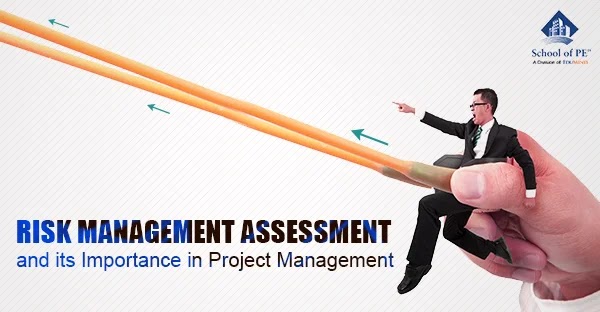Risk Management Assessment and its Importance in Project Management
Sep 19, 2016Table of Contents
Overview of the Risk Management Process
Public and private organizations cannot avoid every risk, but they need to follow a process to do their best to manage potential risks. Risk factors can have an impact on many areas and can include both financial risks and risks of disasters. Disasters can be classified in two ways: natural or man-made disasters. Natural disasters include floods, fires, earthquakes, droughts and wind storms. Man-made disasters include radiological and nuclear attacks. The purpose of risk management is to identify potential problems before a risk occurs. This allows for risk-handling activities to be planned accordingly to mitigate adverse impacts on achieving objectives. The important elements to be considered during the risk management process are diagnosing the risk factor, investigation of risk assessment, emergency planning, identification of remedial measures, systematic measurement, resource availability, analyzing the cost, loss assessment and prevention measures, recovery, relief, reconstruction and rehabilitation activities. The risk management process is an important review topic in a FE exam review course.

Guidelines for the Risk Management Process to Minimize Effects on a Project
Risk management is a continuous and progressive process that acts as a part of business and project management and the scheduling process. Risk management should specify the issues that could hinder the success of critical objectives. The continuous risk management approach has been applied to predict and reduce the risk factors that have a critical impact on a project. The process of risk management requires both time and money. The process is more likely to be employed and maintained if it is applied gradually over time. The key factor to risk management is to have a basic understanding of the process and to move towards its implementation. The key steps of risk management are identify the potential risk, measure the frequency of risks that occur, evaluate the priority of the risk, examine the alternative solution of the risk, finalize the solution and implement and monitor the result. A better understanding of the risk management process provides ideas to help in planning suitable approaches to minimize the impact on risks. Planning and scheduling is a key concept for preparing for the Fundamentals of Engineering exam. The risk management process influences the planning and scheduling process of the activities during project management.
The Five Steps of the Risk Management Process
The process of risk management has several steps to achieve the goal. The first step of the risk management process is identifying the risk. In this step, identify, uncover, recognize and describe risks that affect the outcome of the project. The second step is to analyze the risk factor; once the risk has been identified, determine the consequence of each risk. Develop an understanding of the nature of the risk and its potential to affect project goals and objectives. This information is stored in the database. The third step is to evaluate and rank the risk level. The fourth step is planning to face the risk. This step involves taking the highest ranked risks, creating a plan for these risks to achieve acceptable risk levels and creating preventive measures for these risks. The final step is to monitor and review the risk. These five steps are done continuously to deliver a simple and effective risk management process. Project construction activity duration and activity network diagrams are critical in the FE exam for calculating the project's completion time.
Latest Blogs
Blogs by Year/ Month
Copied to clipboard



